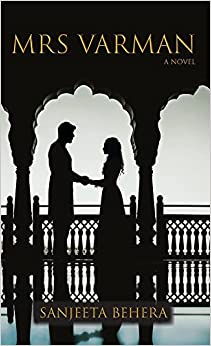Mrs. Varman by Sanjeeta Behera
India is a country of juxtapositions: abject poverty neighboring the well-to-do, garbage spoiling on city streets and fragrant foods on restaurant tables, harsh sunlight burning the air outside dusky rooms with thick embroidered curtains. Sanjeeta Behera brings all this to her readers in Mrs. Varman, offering a complicated backdrop to the stories of two sets of characters whose lives intersect in unexpected ways.
Although the novel begins with a young couple in New York City struggling to repair their marriage after a grievous loss, the story really begins with the kidnapping of street urchins in India, who were then forced to haul rocks and construction materials, beg for hours, barefoot and hungry, or sent out to commit petty theft.
Rajesh, the boss of the operation, held 10 children as captives. (He’d sold others to South Africa and Mexico.) He starved them, beat them and locked them away. It was a harsh and brutal existence, if they survived at all. Vijay and his friend Suresh endured.
Vijay, clever and independent, claws his way to freedom, but it’s a hard life still. He works, he grows up, he falls in love. But nothing is easy in Lalbagh Colony for people of the lower castes. Deprived of basic needs, everyone lives on the edge, and Vijay is determined to better his lot.
FRIENDSHIPS FOUND, ENEMIES RESURFACE
 The young New York couple is Julia and Sachim Varman. Sachim is from India, Julia his American wife, and when she travels to her husband’s home for an extended visit, she meets Vijay, by chance. He has grown up to be a handsome, earnest young man. Julia, neglected by her husband after their loss, is lonely and vulnerable; she and Vijay become friends.
The young New York couple is Julia and Sachim Varman. Sachim is from India, Julia his American wife, and when she travels to her husband’s home for an extended visit, she meets Vijay, by chance. He has grown up to be a handsome, earnest young man. Julia, neglected by her husband after their loss, is lonely and vulnerable; she and Vijay become friends.
Sachim plans to open a dance studio, and so, in her efforts to regain his attention, Julia studies the traditional dances of India. However, the story takes a sudden turn as a dangerous enemy is revealed and a murderer is afoot. Romance and suspense intermingle with emotional scenes and moments of humor as the saga unfolds.
Ms. Behera presents the stories in Mrs. Varman so that her readers are immersed in the noise and smells and colors of Jaipur. She’s careful to slip in definitions of Indian words that aren’t easily understood by context. She describes the costumes of her characters, the colorful sarees of the women, the bangles on their wrists, the high-collared dohti the men wear. The novel is a fine introduction to life in Jaipur, and a portrait of a woman seeking her identity in its world — a world so different from the one she’s known.
RELATED POSTS
Indian American Journalist Investigates Violence Enacted in the Name of “Honor”
“The Henna Artist” Paints the Challenges Women Faced in Post-Colonial India
Progress and Tradition Go Head-to-Head in Indian Political Thriller, “A Nest for Lalita”
Tall Poppy Review: “A Distant Heart” Draws All to India






